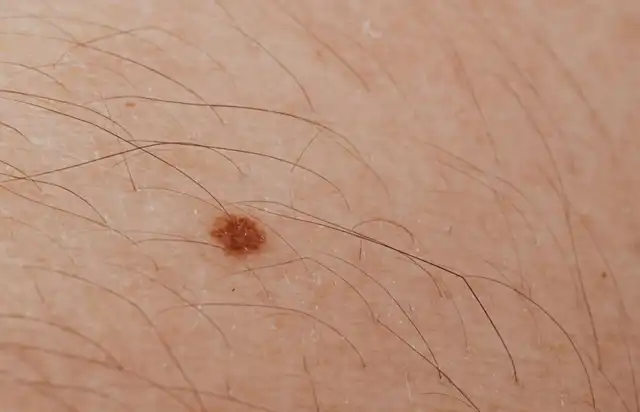Why are “Mole Hairs” Not Recommended to Pluck?
- Normal Liver Cells Found to Promote Cancer Metastasis to the Liver
- Nearly 80% Complete Remission: Breakthrough in ADC Anti-Tumor Treatment
- Vaccination Against Common Diseases May Prevent Dementia!
- New Alzheimer’s Disease (AD) Diagnosis and Staging Criteria
- Breakthrough in Alzheimer’s Disease: New Nasal Spray Halts Cognitive Decline by Targeting Toxic Protein
- Can the Tap Water at the Paris Olympics be Drunk Directly?
Why are “Mole Hairs” Not Recommended to Pluck?
- Should China be held legally responsible for the US’s $18 trillion COVID losses?
- CT Radiation Exposure Linked to Blood Cancer in Children and Adolescents
- FDA has mandated a top-level black box warning for all marketed CAR-T therapies
- Can people with high blood pressure eat peanuts?
- What is the difference between dopamine and dobutamine?
- How long can the patient live after heart stent surgery?
Why are “Mole Hairs” Not Recommended to Pluck?
Why Are “Mole Hairs” Thick and Dark? Experts Say “Not Recommended to Pluck” Potential for Thin Hair and Hair Loss Treatment.
Have you ever noticed that the hairs growing from moles, known as “mole hairs,” are often thicker and darker than other hairs? On the other hand, hairs referred to as “treasure hairs” or “fortune hairs” are thin and white. Even though they are all body hairs, why are they so different?
Dr. Masahiro Akatsuka, the head doctor of Men’s Reze, a specialized medical hair removal clinic with 26 branches nationwide, answered this question.

Why are most of the hairs growing from moles thick and black?
Dr. Masahiro Akatsuka, Head Doctor of Men’s Reze
“Moles are called pigmentary nevi, and there are pigment cells called nevus cells that produce a lot of melanin pigment between the epidermis and dermis, giving them a black or brown color.
There are flat and raised moles, and when hair grows on them, it is said to become thick and black because they contain a lot of melanin pigment.”
The reason for the thick hairs known as “mole hairs” is that they contain a lot of melanin pigment. Mole hairs stand out, but is it okay to pluck them?
Dr. Masahiro Akatsuka, Head Doctor of Men’s Reze
“Moles are pigmentary nevi, benign tumors where pigment cells that produce melanin, called nevus cells, proliferate. Small pigmentary nevi are not a concern, but large ones can become malignant.
Not only on moles but also on other parts of the body, plucking hairs can damage hair follicles and allow bacteria to enter, causing inflammation. Some say that stimulating moles can lead to malignancy, so it is not recommended to pluck hairs from moles.”
If you need to remove hairs from moles, it is best to use scissors to cut them near the roots.
Additionally, hairs growing from moles cannot be removed with medical lasers or light from cosmetic hair removal, but they can be removed with electrolysis using an insulated needle.
Moreover, research is underway on these “mole hairs.” It was reported last year in the scientific journal “Nature” that researchers from international groups such as the University of California and Gifu University found that a protein called “osteopontin” is abundantly secreted from aging pigment cells that are the origin of moles.
Furthermore, when this osteopontin was injected into normal mouse skin, hair grew firmly from the injected area, suggesting that this osteopontin could lead to the development of new treatments for thinning hair and alopecia in the future.
Lastly, what about white, elongated hairs called “fortune hairs” or “treasure hairs”?
What is the true nature of these hairs?
Dr. Masahiro Akatsuka, Head Doctor of Men’s Reze
“Fortune hairs are white, long hairs that grow in places where long hairs are not supposed to grow. Fortune hairs have various meanings depending on where they grow, and they are said to bring luck, so it is better not to pluck them.
However, why these hairs called fortune hairs grow is not scientifically understood.
It is said that the hair growth cycle, disruptions in the hair cycle, hormonal imbalances, and genetics may be involved.”
In the case of fortune hairs, is it okay to pluck them?
Dr. Masahiro Akatsuka, Head Doctor of Men’s Reze
“Not only for fortune hairs but also for other hairs, using tweezers is not good for the skin.
There is a possibility of ingrown hairs, also known as buried hairs, or folliculitis caused by bacteria entering. It is recommended to cut them at the roots with scissors or to use a shaver.”
Why are “Mole Hairs” Not Recommended to Pluck?
References:
https://news.yahoo.co.jp/articles/7408bf0dd2957a340fe34246d14f354967d80a98
(source:internet, reference only)
Disclaimer of medicaltrend.org
Important Note: The information provided is for informational purposes only and should not be considered as medical advice.



